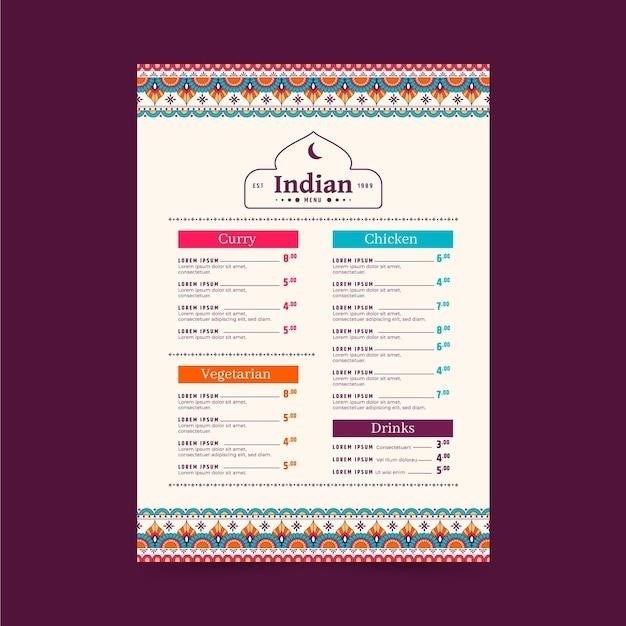When We Were Alone⁚ A Children’s Book Exploring Residential Schools

This poignant children’s book‚ written by David A. Robertson and illustrated by Julie Flett‚ delicately explores the impact of Canadian residential schools. A young girl’s curiosity about her grandmother’s vibrant clothing and traditions unveils a powerful story of resilience and cultural preservation amidst historical trauma. Available in PDF and EPUB formats‚ it’s a vital resource for understanding this sensitive topic.
Book Details and Awards
When We Were Alone‚ a children’s book by David A. Robertson and illustrated by Julie Flett‚ was first published on December 1‚ 2016‚ by HighWater Press. The book is available in English‚ and a notable edition includes text in Swampy Cree syllabics and Roman orthography‚ translated by Alderick Leask. This impactful work garnered significant recognition‚ notably winning the prestigious 2017 Governor General’s Literary Award. Its success extended beyond this accolade; it was also a finalist for the 2017 TD Canadian Children’s Literature Award‚ showcasing its critical acclaim and widespread appeal. The book’s ISBN is 9781553796961‚ and digital formats like PDF and EPUB are readily available‚ enabling broader accessibility for readers and educational institutions. The publication’s success stems from its sensitive yet powerful exploration of a difficult historical period in Canada‚ making it an essential resource for understanding the lasting effects of residential schools. Its beautiful illustrations and compelling narrative have resonated deeply with readers of all ages‚ solidifying its position as a significant contribution to children’s literature and historical understanding.
Author and Illustrator
When We Were Alone is a collaborative effort between acclaimed author David A. Robertson and gifted illustrator Julie Flett. Robertson‚ a renowned Canadian author‚ has penned numerous books for young readers‚ demonstrating a consistent commitment to sharing Indigenous stories and perspectives. His works often explore themes of identity‚ resilience‚ and cultural heritage‚ reflecting his own background and experiences. Robertson’s contributions extend beyond When We Were Alone; he is the author of over 25 books for young readers‚ including titles that have also received significant literary awards. His dedication to crafting narratives that resonate with young audiences and promote understanding is evident in his body of work. Complementing Robertson’s powerful writing is the artistry of Julie Flett‚ whose illustrations bring the story to life with sensitivity and vibrancy. Flett’s distinctive style enhances the emotional impact of the narrative‚ contributing significantly to the book’s overall success. The combined talents of Robertson and Flett resulted in a book that is both visually captivating and emotionally resonant‚ making it a truly exceptional work of children’s literature.
Plot Summary and Themes
In When We Were Alone‚ a young Indigenous girl observes her grandmother’s vibrant clothing and long‚ braided hair‚ prompting questions about her heritage. The grandmother’s responses weave a poignant tale of her experiences in a Canadian residential school. The story unfolds through a series of flashbacks‚ revealing the challenges and losses faced by Indigenous children separated from their families and cultures. The narrative carefully portrays the resilience and strength demonstrated by the grandmother and other children in maintaining their cultural identity despite the hardships they endured. Key themes explored include the intergenerational trauma resulting from residential schools‚ the importance of cultural preservation‚ and the enduring strength of family bonds. The book subtly addresses the complexities of historical injustices while celebrating the enduring spirit of Indigenous people. The contrast between the grandmother’s past experiences and her present-day life highlights the lasting impact of residential schools while also emphasizing the power of remembering and healing. The simple yet evocative narrative makes this a powerful story for young readers‚ fostering empathy and understanding.
Critical Reception and Reviews
When We Were Alone has garnered significant critical acclaim‚ earning praise for its sensitive portrayal of a difficult historical period and its celebration of Indigenous resilience. The book received a starred review from Booklist‚ highlighting its emotional impact and the skillful way it addresses the complexities of residential schools for a young audience. Reviewers have commended the author’s ability to balance the somber realities of the past with a message of hope and empowerment. The illustrations by Julie Flett have also been lauded for their beauty and effectiveness in conveying the story’s emotional depth. Many critics have noted the book’s suitability for fostering discussions about intergenerational trauma‚ cultural preservation‚ and the importance of understanding Indigenous history. Its success in reaching young readers while providing a nuanced perspective on a sensitive subject has been frequently highlighted. The book’s impact extends beyond individual reviews‚ contributing to broader conversations about reconciliation and the legacy of residential schools in Canada. Its inclusion on recommended reading lists and its use in educational settings further underscore its critical importance.
Educational Resources and Teacher Guides
Recognizing the book’s potential for classroom use‚ Portage & Main Press provides a free teacher’s guide downloadable from their website. This valuable resource offers educators supplementary materials designed to facilitate meaningful discussions and learning activities based on When We Were Alone. The guide likely includes lesson plans‚ discussion prompts‚ and activities tailored to different age groups and learning styles. It may also suggest ways to incorporate the book into broader curriculum units focusing on Indigenous history‚ culture‚ and resilience. Furthermore‚ the guide might provide context on the historical background of Canadian residential schools‚ helping educators prepare for sensitive conversations with students. Additional resources may be available online from educational organizations or websites specializing in Indigenous education. These resources could include supplemental readings‚ videos‚ or interactive activities that complement the book’s themes and enhance students’ understanding. The availability of these supportive materials underscores the commitment to making this important story accessible and impactful in educational settings.
Availability and Formats (PDF‚ EPUB‚ etc.)

When We Were Alone is readily available in various formats to cater to diverse reader preferences and accessibility needs. The book is published in print‚ offering a traditional reading experience. For digital consumption‚ it’s accessible as a PDF‚ providing a readily downloadable and printable version suitable for various devices. An EPUB version is also available‚ optimized for e-readers and tablets‚ ensuring comfortable and convenient reading on different screens. This flexibility allows readers to choose their preferred format based on personal reading habits and technological access. Furthermore‚ the digital versions might offer features such as adjustable font sizes‚ making the text more accessible to readers with visual impairments. The availability of multiple formats broadens the book’s reach‚ ensuring its impactful story can be shared widely. Online retailers like Amazon and bookstores likely offer both physical and digital copies. The digital formats are particularly helpful for schools and libraries that can easily distribute the book electronically to students and patrons. This widespread accessibility is crucial in promoting understanding and awareness of the book’s important historical themes.
Historical Context⁚ Canadian Residential Schools
When We Were Alone is deeply rooted in the historical context of Canada’s residential school system. From the late 19th to the late 20th century‚ the Canadian government‚ in collaboration with various churches‚ operated a network of residential schools designed to assimilate Indigenous children into dominant Canadian culture. These schools forcibly removed children from their families and communities‚ often resulting in severe trauma and lasting intergenerational effects. Students were forbidden from speaking their native languages‚ practicing their traditions‚ and connecting with their cultural heritage. The schools’ harsh conditions‚ including physical and sexual abuse‚ contributed to lasting physical and mental health problems and the erosion of Indigenous cultural identities. The book’s narrative sheds light on this dark chapter in Canadian history‚ offering a glimpse into the experiences of Indigenous children who endured these institutions. Understanding this historical context is crucial to fully appreciating the book’s emotional depth and its significance in promoting reconciliation and awareness of the lasting impact of these schools on Indigenous communities.
The Story’s Impact and Legacy
When We Were Alone has resonated deeply with readers and educators alike‚ sparking crucial conversations about Canada’s residential school history and its enduring consequences. The book’s gentle yet powerful storytelling approach makes it accessible to young readers‚ while its emotional honesty allows for a sensitive exploration of complex themes. Its impact extends beyond individual readers; it has become a valuable resource in classrooms and libraries‚ facilitating discussions on reconciliation‚ cultural preservation‚ and intergenerational trauma. The book’s award-winning status‚ including the Governor General’s Literary Award‚ further solidifies its importance in the Canadian literary landscape. By centering Indigenous voices and experiences‚ When We Were Alone contributes significantly to ongoing efforts towards truth and reconciliation‚ encouraging empathy‚ understanding‚ and a commitment to addressing the lasting effects of the residential school system. Its legacy lies not only in its artistic merit but also in its role as a catalyst for meaningful dialogue and social change.
Similar Books and Further Reading
For readers seeking similar explorations of Indigenous experiences and the lasting impact of residential schools‚ several resources offer valuable perspectives. Books like The Barren Grounds by David A. Robertson‚ another acclaimed work by the same author‚ delve into related themes of resilience and cultural identity within a middle-grade setting. For younger audiences‚ picture books focusing on Indigenous culture and history can provide a foundation for understanding the context of When We Were Alone. Furthermore‚ non-fiction works detailing the history of Canadian residential schools offer deeper historical context and analysis. The Truth and Reconciliation Commission of Canada’s final report is a crucial resource for comprehensive information on this significant chapter in Canadian history. Exploring the works of Indigenous authors and illustrators‚ such as those featured on websites like American Indians in Children’s Literature‚ will broaden understanding of diverse Indigenous experiences and storytelling traditions. These resources‚ both fiction and non-fiction‚ offer a pathway towards a more complete and nuanced understanding of the complex issues raised in When We Were Alone.




























